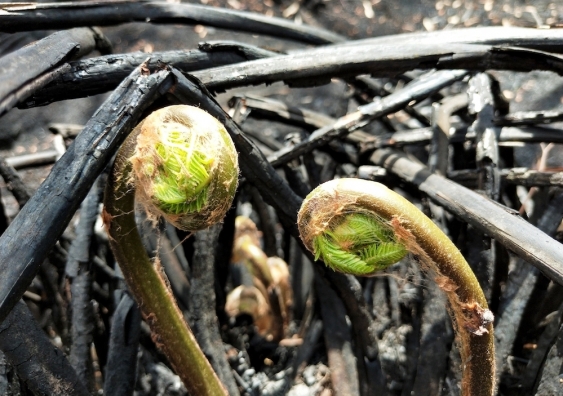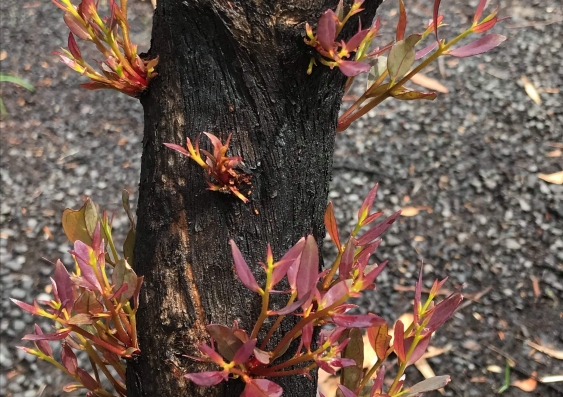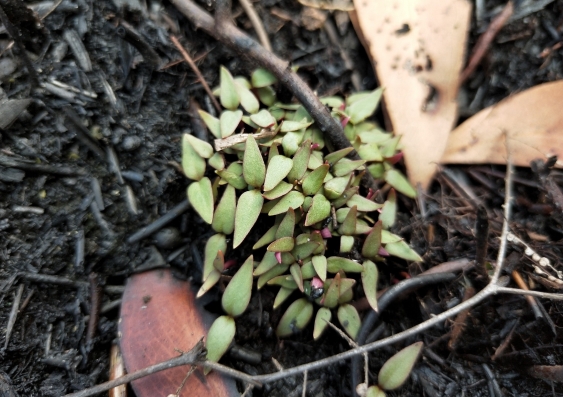Citizen scientists get snappy to monitor bushfire-ravaged environment
Citizen scientists are being encouraged to photograph bushfire-affected areas to help UNSW Sydney researchers track the recovery of flora and fauna after the fires.
Citizen scientists are being encouraged to photograph bushfire-affected areas to help UNSW Sydney researchers track the recovery of flora and fauna after the fires.

Forget Instagram – UNSW Sydney researchers are urging citizen scientists to use their mobile phones for a good cause: to monitor the recovery of bushfire-affected plants and animals for the Environment Recovery Project which will inform future research.
Anyone in fire-affected areas of Australia can participate, no matter their scientific knowledge or camera skills: all people need to do is download the mobile app – available via the global citizen science iNaturalist website – take a photo of a burnt tree, for example, and upload the image to the app.
The iNaturalist community has more than 31 million biodiversity records and links to Australia’s leading citizen science platform Atlas of Living Australia where everybody from scientists and policy makers to the general public can access a wealth of biodiversity information.
Casey Kirchhoff, PhD candidate at the UNSW Centre for Ecosystem Science, founded the Environment Recovery Project after the devastating Southern Highlands’ Morton bushfire destroyed her Wingello home early this month.
Mrs Kirchhoff is determined to rebuild, but her passion for the environment and natural curiosity inspired her to start tracking the post-fire recovery of her surrounding environment, despite her loss.
“I realised I was probably among a handful of scientists collecting this information. So, I thought, why not ask citizen scientists to share their photos? The bushfires have burnt such a large area; it’s impossible to properly survey it with our current resources,” she said.
“The more observations we can collect, the more we will know about the impact of the fires on our environment – particularly in the major bushfire areas in southeastern Australia and right up to Queensland.
“We also need hope when so many of us have lost so much – while we rebuild our home, I look forward to seeing the recovery of the bush with the help of citizen scientists. This is another way people can contribute to post-bushfire efforts.”

Eucalyptus resprouting new leaves after the January 2020 bushfires. This is what many people imagine when they envision bushfire recovery. Picture: Janine Gibson.
Professor Richard Kingsford, Director of the UNSW Centre for Ecosystem Science, said the citizen science initiative gave people the chance to contribute to the understanding of how our amazing natural environment could recover some of its value after the devastation.
“We will use people’s observations for future research into understanding how some areas recover better than others, and in different places, as well as understanding which animals and plants come back first,” Prof Kingsford said.
“The key aims of this initiative are to understand which plant species are resprouting and growing seedlings, to calculate when and how animals return to burnt areas, and to highlight which species are struggling to recover and might need our help.
“Understanding recovery from this unprecedented fire season is scientifically critical and the opportunity to harness the community’s resources through the Environment Recovery Project is a practical way of doing this.”
Mrs Kirchhoff started using the iNaturalist app a couple of days after the bushfire razed her house and found fledgling life in the charred landscape.
“I took photos of new shoots on ferns and grass trees, wombats in their burrows, glossy black and gang gang cockatoos in full flight, and brilliant orange fungi dotting the woodland floor,” she said.
“Seeing these things gave me hope, but they also highlight the importance of monitoring the recovery of our biodiversity in the wake of the fires.
“The team at the UNSW Centre for Ecosystem Science aims, with everybody’s help, to build a complete picture of when, where and how Australia’s ecosystems bounce back from these unprecedented fires.”

An example of reseeding after the bushfires in January 2020. Multiple seedlings have germinated from the soil seed bank. Picture: Casey Kirchhoff
Mrs Kirchhoff said people should only walk through a bushfire-affected area if it was safe to do so.
“Download the iNaturalist app, have a look through burnt bushland and take a photo of a plant, animal or fungus and upload it to the Environment Recovery Project,” she said.
“If you can identify the species do so, but even if you can’t, the photos are still valuable because other people will be able to help. The app will read the image location and allow researchers to identify the particular animal or plant.
“It would be amazing if thousands of citizen scientists uploaded their images – we look forward to watching the bush recover together.”
Casey Kirchhoff PhD Candidate, UNSW Centre for Ecosystem Science E: c.gibson@unsw.edu.au Twitter: @gumnut_case
Professor Richard Kingsford Director of the UNSW Centre for Ecosystem Science E: richard.kingsford@unsw.edu.au T: 0419 634 215 Twitter: @CES_UNS